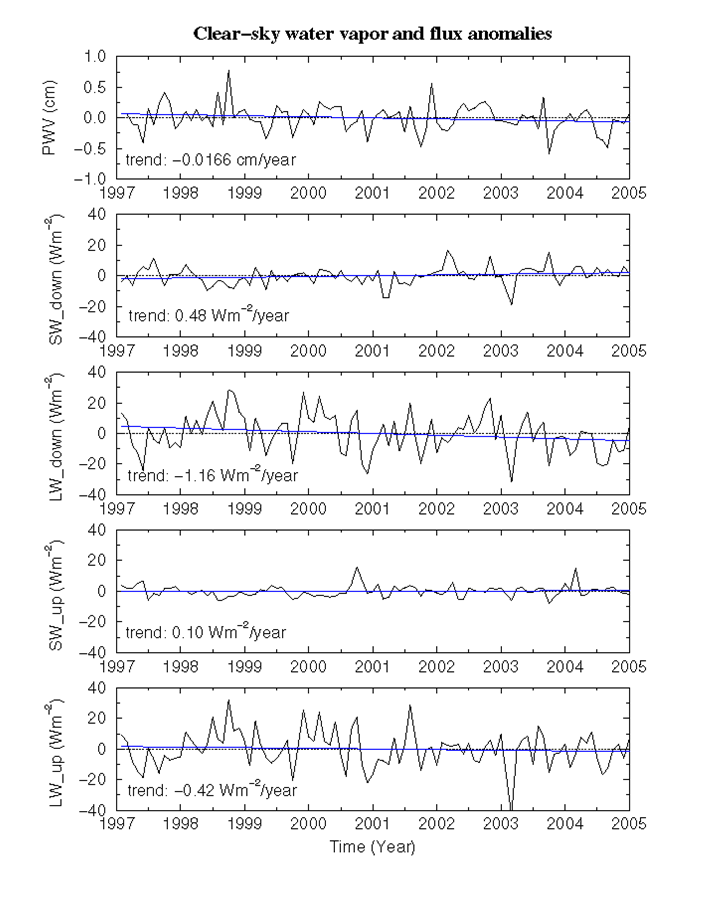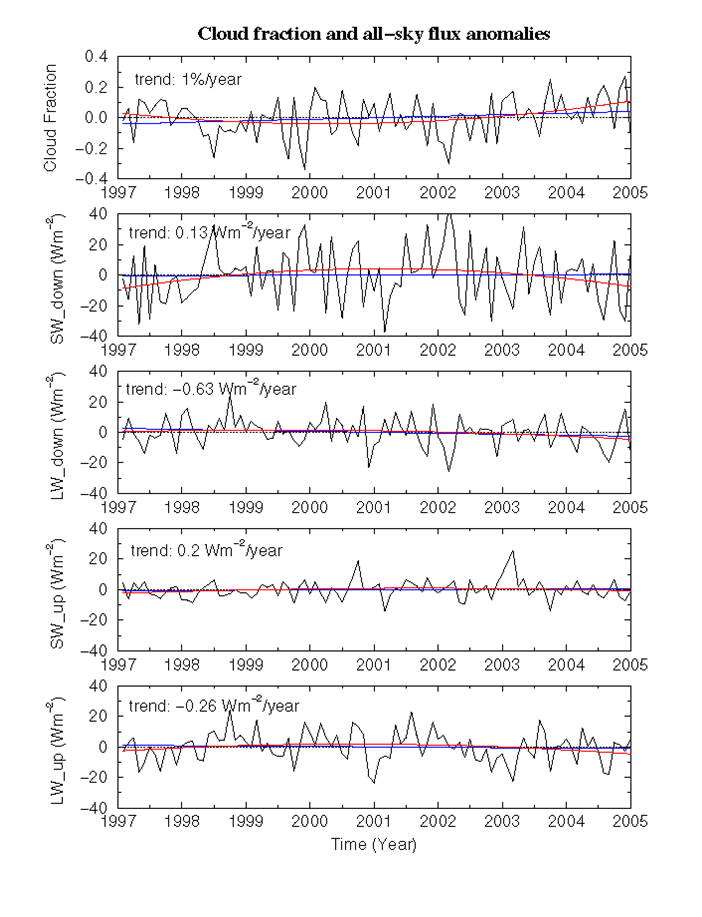Observational Evidence of Changes in Water Vapor, Clouds, and Radiation
Submitter
Dong, Xiquan — University of Arizona
Area of research
Cloud Distributions/Characterizations
Journal Reference
Dong, X., B. Xi, and P. Minnis, 2006: Observational Evidence of Changes in Water vapor, Clouds, and Radiation at the ARM SGP site. Geophys. Res. Lett., 33, L19818,doi:10.1029/2006GL027132.
Science
As the highest priority of the U.S. Climate Change Research Initiative, improving the understanding of clouds and their effect on the amount of energy&mdas;or solar radiation—that reaches the Earth's surface is critical for understanding the current climate and is an important part of simulating potential climate change. Solar radiation at the surface is modulated by clouds, mainly cloud fraction, cloud height, and the microphysical/optical properties of clouds. Water vapor, the atmosphere's dominant greenhouse gas, also has a positive feedback on surface warming. Researchers funded by the U.S. Department of Energy's Atmospheric Radiation Measurement (ARM) Program examined 8 years of observational data from the ARM Climate Research Facility's Southern Great Plains (SGP) site in Oklahoma and found a negative correlation between cloud fraction and solar radiation at the surface. These results are valuable for advancing scientific understanding of cloud-radiation interactions and for enabling climate/forecast modelers to more fully evaluate their simulations over the SGP site.
Impact
Using 8 years of data from the SGP site, the researchers found that solar radiation at the surface increased from 1997 to 2000, but significantly decreased from 2001 to 2004, changes that exactly mirrored the variation of cloud fraction. Under clear-sky conditions, the rates of change of water vapor, solar, and infrared radiation at the surface were -0.0166 cm/yr, 0.48 Wm-2/yr, and -1.16 Wm-2/yr, respectively. These results indicate (Figure 1) that the cloud-free atmosphere has become more transparent with more solar radiation from 1997 to 2004. The increased solar radiation, however, has been counterbalanced by the change in infrared radiation. That is, the decreased infrared radiation outweighed the increased solar radiation, resulting in a net decrease of radiation at the surface and indicating that precipitable water vapor changes have a much greater impact on the infrared radiation than on solar. Cloud fraction (Figure 2) is the dominant modulator for determining solar radiation at the surface. The negative correlation between cloud fraction and solar radiation at the surface as shown in this study is similar to those derived in past field programs using data collected from different locations and years.
Summary
These research findings support the need for additional studies, such as a longer time period at the SGP site and at other ARM Climate Research Facility sites in the Tropical Western Pacific and in Barrow, Alaska.



